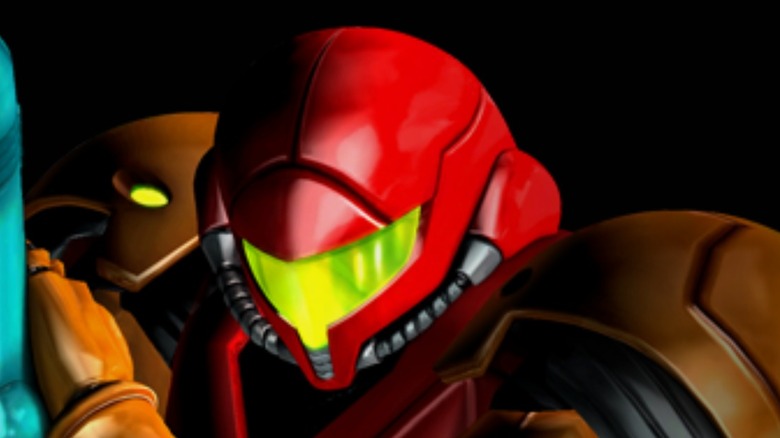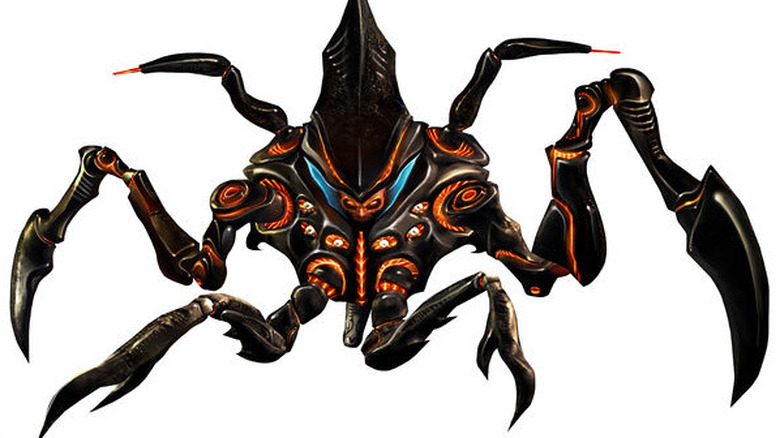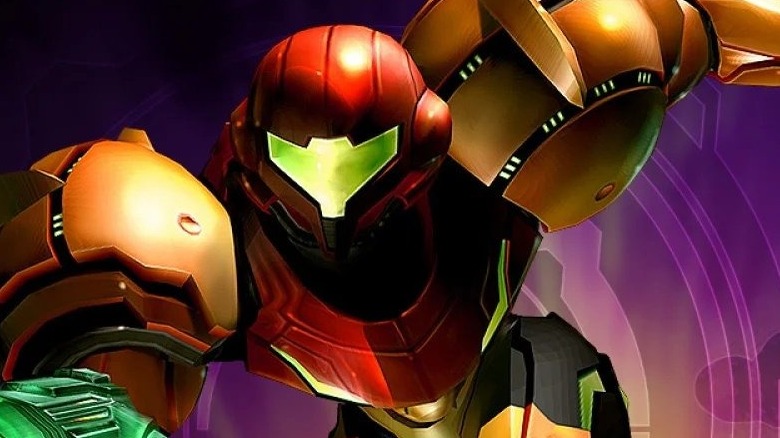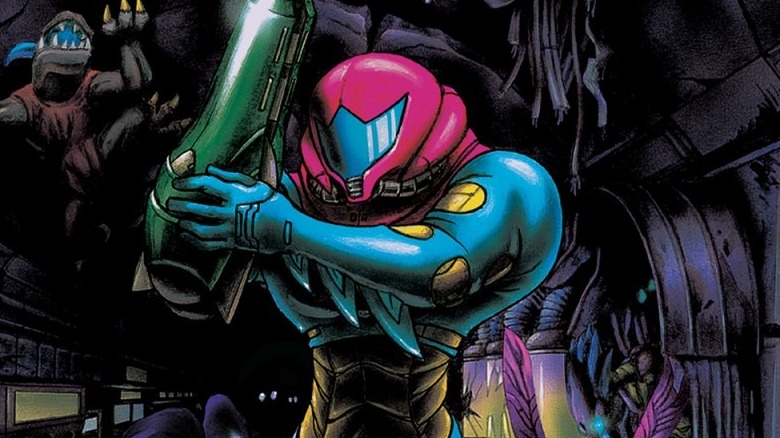Metroid Is More Related To Alien Than You Realized
Correction 09/25/23: A previous version of this article stated that "Metroid" was originally released on Super Famicom in 1986. It was actually first released for the original Famicom Disk System.
Any story set in space and featuring a bold, brave woman protagonist is going to earn comparisons to "Alien," the 1979 film from Ridley Scott. "Alien" pioneered the space-bound survival horror genre in film and inspired a broad swath of science fiction tales (and a saga of sequels), but it's also linked to another famous space story: "Metroid." The "Metroid" series has long been a beloved Nintendo franchise, but in many ways the series is an homage to "Alien."
While the biology of the Xenomorph's of "Alien" might not always make sense, its connections to "Metroid" do. Both "Alien" and "Metroid" share settings, character archetypes, and even creature designs. With "Metroid Dread" fast approaching, fans are looking to point out similarities between the two classic series, and there's no shortage of details to explore.
"Metroid," the first game in the series, was released on the Famicom Disk System, then moved to the NES shortly after in 1986. An interview in Retro Gamer revealed that the design team for several "Metroid" titles felt influenced by both "Alien" and the work of H.R. Giger, who created the iconic Xenomorph design. But how far do the similarities go? "Metroid" may be more related to "Alien" than you ever realized.
Alien design similarities
At first glance, the Xenomorph from "Alien," all sliming orifices and oblong shapes, doesn't seem to have much in common with the titular aliens of "Metroid." Metroids are round, translucent, and able to suck the life force out of any other living creature. There's something weirdly cute about Metroids, even though their existence is horrifying. In "Super Metroid," a baby Metroid even adopts Samus Aran as its mother, following her through certain levels of the game and ultimately helping her defeat Mother Brain. A Xenomorph could never.
But the design and function of the two iconic aliens actually aren't so dissimilar, despite first appearances. Both aliens latch onto the faces of their victims, either to implant embryos in them or drain their energy, and both have a strong impulse to violently reproduce.
However, there are more aliens in "Metroid" than its signature round blob, and some of those have connections to "Alien," too. Ridley, Samus' nemesis in several games, looks like a giant pterodactyl, but his name comes directly from the director of "Alien."
Plot parallels in Metroid and Alien
Both "Alien" and "Metroid" have tough women protagonists, and one of the most celebrated "Metroid" entries even had a woman working behind the scenes to help in its development. In an interview with the "Super Metroid" development team, director Yoshio Sakamoto revealed that his wife acted as his primary feedback for the game. It's no secret that Samus Aran of "Metroid" was heavily influenced by Ellen Ripley from the "Alien" franchise. While some might find the connection surprising, the two women share similar paths.
Both Samus and Ripley must fight against ever-present aliens in order to escape ruined space stations, and both women must endure dramatic escape sequences in order to save themselves. Both of them also tend to rescue as many animals as possible. In Samus' case, she saves some alien creatures in "Super Metroid." In Ripley's case, it's her cat Jones.
Of course, Sakamoto has never tried to hide the relationship between Samus and Ripley. In the same interview concerning "Super Metroid," he said, "Of course she's a bit like Ripley from Aliens (Sigourney Weaver), but a little more extravagant."
Ripley and Samus both must unite with aliens
Ripley and Samus share similar beginnings, but they also have parallel fates, eventually becoming part of the thing they hate. In "Alien: Resurrection," silly government agents clone Ripley, creating a powerful human-Xenomorph hybrid. While this clone, Ripley 8, looks like Ripley and sounds like Ripley (and is still played by Sigourney Weaver), she is decidedly a combination of alien and human traits.
Samus also ends up fused with the Metroids, in a way. In the aptly titled "Metroid Fusion" for the Game Boy Advance, Samus also merges her DNA with that of the Metroids. Like Ripley, Samus didn't have a choice in the matter, though unlike Ripley, she was alive at the time. After being afflicted with X, a mysterious lifeform that's as invasive as it is deadly, parts of Samus' suit had to be removed, while others were fused to her body. In order to save her life, doctors inject Samus with modified DNA from the baby Metroid from "Super Metroid," allowing Samus' body to heal itself. However, from that point on, she's part alien, just like Ripley 8 was in "Alien: Resurrection."




